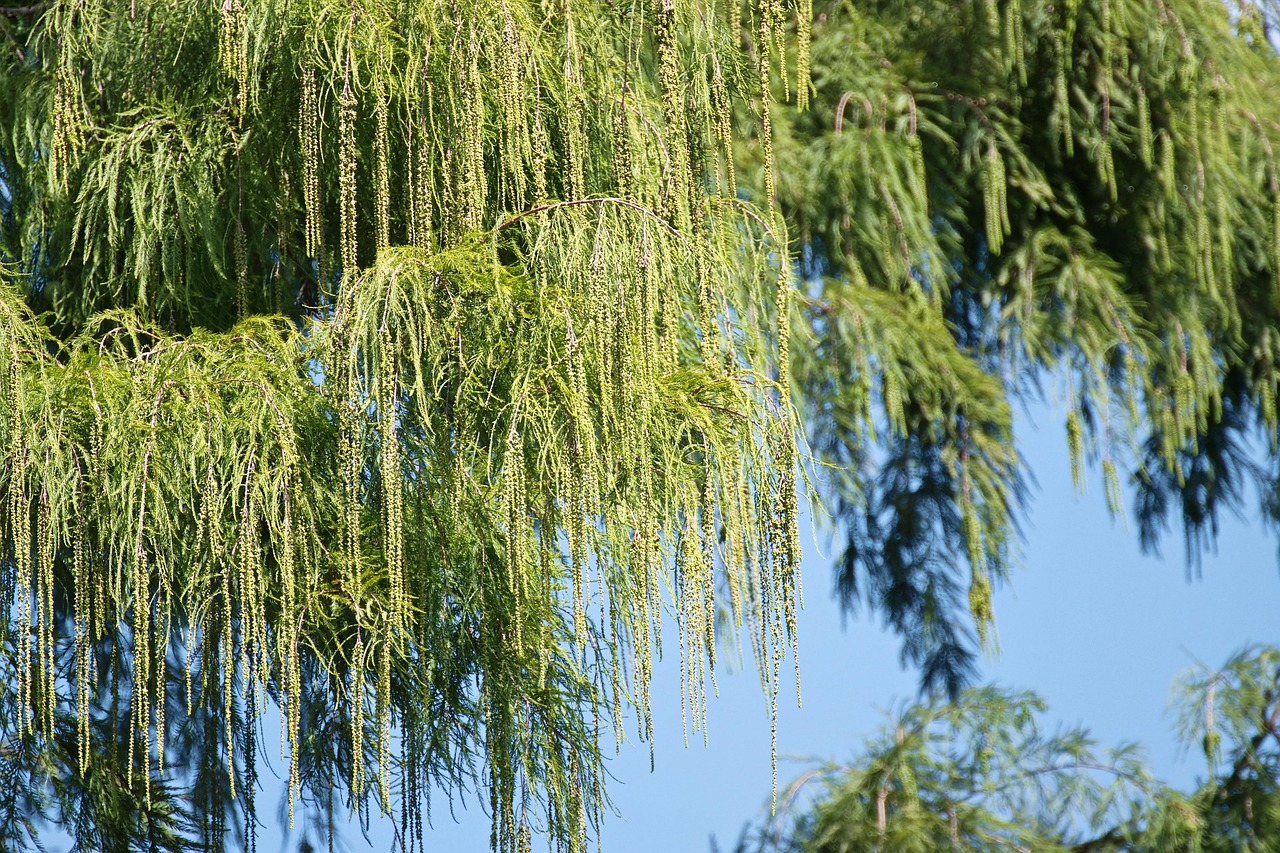The Chinese Fringe Tree (Chionanthus retusus) typically grows at a moderate rate, reaching maturity in about 10 to 15 years. Its flowering season occurs in late spring to early summer, producing fragrant white flowers that attract pollinators.
The Chinese Fringe Tree is a deciduous tree native to China and Korea. It is known for its unique, fringed flower clusters that create a stunning visual display. This tree thrives in well-drained soil and prefers full sun to partial shade. Understanding the growth rate and flowering times of this species is essential for gardeners and landscapers planning their plantings.

Gardeners often choose the Chinese Fringe Tree for its beauty and adaptability. It can serve as a focal point in landscapes or as part of a mixed border. The tree’s moderate growth rate makes it a suitable choice for those who desire a relatively low-maintenance addition to their garden.
Growth Rate of the Chinese Fringe Tree
The growth rate of the Chinese Fringe Tree can vary based on several factors, including soil conditions, climate, and care provided. Generally, this tree grows about 12 to 24 inches per year during its early years. After reaching maturity, the growth rate slows down significantly.
Here are some factors that influence the growth rate of the Chinese Fringe Tree:

- Soil Quality: Well-drained, fertile soil promotes faster growth.
- Watering: Regular watering during dry spells helps establish a strong root system.
- Sunlight: Full sun encourages more vigorous growth compared to partial shade.
- Temperature: The tree thrives in USDA hardiness zones 5 to 9, where it experiences warm summers.
Understanding these factors can help gardeners maximize the growth potential of their Chinese Fringe Trees. Proper care will lead to healthier trees that grow more robustly and flower more abundantly.
Flowering Times and Characteristics
The flowering period of the Chinese Fringe Tree is one of its most attractive features. During late spring to early summer, the tree produces clusters of delicate, fringe-like white flowers. These flowers emit a pleasant fragrance, making them appealing to both people and pollinators.
Typically, flowering occurs in May or June, depending on the climate and specific growing conditions. The flowers are not only visually striking but also play a crucial role in attracting bees and other beneficial insects that contribute to pollination.

| Flowering Month | Description | Pollinators Attracted |
|---|---|---|
| May | Initial blooming begins with clusters of white flowers appearing. | Bees, butterflies |
| June | Full bloom occurs, enhancing the visual appeal and fragrance. | Bees, hummingbirds |
The longevity of the flower display can last several weeks, creating a stunning spectacle in any garden. After flowering, the tree produces small, dark blue fruits that are not only attractive but also provide food for birds.
Caring for the Chinese Fringe Tree during its flowering season includes ensuring adequate water supply and occasional pruning. Pruning should be done after blooming to maintain shape and encourage future growth without disrupting the flowering cycle.
The allure of the Chinese Fringe Tree lies not only in its beautiful flowers but also in its overall structure and form. As it matures, it develops an attractive bark and branching pattern that adds year-round interest to landscapes.

By understanding the growth rate and flowering times of the Chinese Fringe Tree, gardeners can better appreciate this unique species and incorporate it successfully into their landscaping projects. Proper planning will ensure that this beautiful tree thrives and provides enjoyment for many seasons to come.
Environmental Requirements for Optimal Growth
The growth and flowering of the Chinese Fringe Tree are highly influenced by environmental conditions. Understanding these requirements helps promote a healthy and thriving tree. The following factors play a significant role in its development:
- Soil Type: The Chinese Fringe Tree prefers loamy or sandy soil that is well-drained. Heavy clay soils can retain too much moisture, leading to root rot.
- pH Levels: A pH level of 6.0 to 7.0 is ideal for optimal nutrient absorption.
- Sunlight: Full sun is preferred, but the tree can tolerate partial shade. However, too much shade may reduce flowering.
- Watering Needs: Regular watering during dry spells is crucial, especially when the tree is young and establishing its root system.
In addition to these factors, the local climate can significantly affect growth rates. The Chinese Fringe Tree thrives best in regions with warm summers and moderate winters.
Pest and Disease Management
Like any other ornamental tree, the Chinese Fringe Tree can be susceptible to various pests and diseases. Proper management strategies can help mitigate these issues and ensure healthy growth.
Common pests that may affect the Chinese Fringe Tree include:
- Scale Insects: These pests can cause yellowing leaves and stunted growth. Regular inspection and horticultural oils can help manage their population.
- Spider Mites: Often found in dry conditions, spider mites can lead to leaf drop if not controlled. Increasing humidity and using insecticidal soap can be effective solutions.
- Aphids: These small insects feed on sap and can cause leaf curling. Introducing natural predators like ladybugs can help keep their numbers down.
Diseases such as root rot and powdery mildew can also affect the tree. Root rot often occurs in poorly drained soil, while powdery mildew thrives in humid conditions. To prevent these issues:
- Ensure proper drainage in planting areas.
- Avoid overhead watering to minimize humidity around the foliage.
- Apply fungicides when necessary to control fungal infections.
Pruning Techniques for Healthier Growth
Pruning is a vital part of maintaining the health and aesthetic appeal of the Chinese Fringe Tree. Proper pruning enhances airflow through the branches, improves sunlight exposure, and encourages more robust flowering in subsequent seasons.
Here are some recommended pruning practices:
- Timing: Prune the tree after flowering, typically in late summer or early fall, to avoid cutting off next year’s flower buds.
- Remove Dead or Diseased Wood: Cuts should be made at the branch collar to encourage healing and prevent disease spread.
- Thin Out Crowded Branches: This helps improve light penetration and air circulation within the canopy.
- Maintain a Central Leader: Aim for a strong central leader to support the tree’s structure as it matures.
Nutritional Needs
The Chinese Fringe Tree benefits from regular feeding to support its growth and flowering capabilities. Understanding its nutritional needs can help gardeners provide the right type of fertilizer at the appropriate times.
Key nutrients required include:
- Nitrogen: Essential for leaf growth; apply in early spring to boost new growth.
- Phosphorus: Important for root development and flowering; a balanced fertilizer with phosphorus will support overall health.
- Potassium: Helps with overall plant vigor; apply during the growing season for better resistance to diseases.
A slow-release fertilizer applied in early spring is often ideal for maintaining nutrient levels throughout the growing season. Always follow application guidelines to avoid over-fertilization, which can harm the tree.
Landscape Uses
The Chinese Fringe Tree is versatile in landscaping, offering beauty and functionality. Here are some popular landscape uses:
- Specimen Tree: Its unique flowering makes it a stunning focal point in gardens.
- Shade Tree: Provides dappled shade, making it suitable for parks and larger gardens.
- Mixed Borders: Complements other plants with its attractive foliage and flowers.
- Pollinator Gardens: Attracts bees and butterflies, contributing to biodiversity.
The adaptability of the Chinese Fringe Tree allows it to thrive in various garden settings, making it a favored choice for landscape designers and homeowners alike.
Cultivation Techniques for the Chinese Fringe Tree
Successfully growing the Chinese Fringe Tree involves understanding the best cultivation techniques. These practices ensure that the tree not only survives but thrives in its environment. Below are key cultivation techniques that can help gardeners achieve optimal growth.
Planting Guidelines
Proper planting is crucial for the establishment of the Chinese Fringe Tree. Here are some steps to follow:
- Selecting the Right Location: Choose a spot that receives full sun for most of the day. Ensure the area has good air circulation.
- Soil Preparation: Test the soil pH and amend it as necessary to maintain a range of 6.0 to 7.0. Add organic matter to improve drainage and fertility.
- Digging the Hole: Create a hole that is twice as wide and just as deep as the root ball. This allows roots to spread easily.
- Planting: Place the tree in the center of the hole, ensuring that the root flare is level with the soil surface. Backfill with native soil and water thoroughly.
Watering Practices
Watering is vital, especially during the first few years after planting. Here are some watering practices to consider:
- Initial Watering: Water the tree immediately after planting to eliminate air pockets in the soil.
- Routine Watering: During dry spells, provide deep watering once a week. This encourages deeper root development.
- Monitoring Soil Moisture: Use your finger to check moisture levels in the top few inches of soil. Water when it feels dry.
Seasonal Care and Maintenance
Seasonal care is essential to ensure the health and vitality of the Chinese Fringe Tree throughout the year. Different seasons require specific attention and tasks.
Spring Care
As temperatures rise in spring, it is important to prepare the tree for growth:
- Fertilization: Apply a balanced slow-release fertilizer to support new growth.
- Pruning: Remove any dead or damaged branches while shaping the tree for better airflow.
- Pest Inspection: Check for signs of pest infestations and take action if necessary.
Summer Care
During the summer months, focus on maintaining moisture levels and overall health:
- Regular Watering: Ensure consistent moisture, especially during dry periods.
- Mulching: Apply organic mulch around the base to retain soil moisture and suppress weeds.
- Pest Management: Monitor for pests such as aphids and spider mites, treating as needed.
Fall Care
The fall season brings its own set of maintenance needs as the tree prepares for winter:
- Final Watering: Ensure deep watering before winter sets in to help the tree withstand cold temperatures.
- Pruning: Conduct any additional pruning to maintain shape, but avoid heavy cuts close to winter.
- Cleaning Debris: Remove fallen leaves and debris to prevent disease spread.
Winter Care
In winter, focus on protecting the tree from harsh conditions:
- Mulch Maintenance: Keep mulch around the base to insulate roots from freezing temperatures.
- Avoid Overwatering: Be cautious with watering, as trees need less moisture during dormancy.
- Pest Protection: Inspect for any overwintering pests and take preventative measures if necessary.
Potential Challenges and Solutions
Despite its hardiness, the Chinese Fringe Tree may encounter challenges that can hinder its growth. Identifying these challenges early can prevent long-term damage.
Drought Stress
If the tree experiences drought stress, it may show signs such as wilting leaves or leaf drop. To alleviate this:
- Irrigation: Increase watering frequency during hot, dry spells.
- Mulching: Apply mulch to retain soil moisture.
Nutrient Deficiencies
Nutrient deficiencies can manifest as yellowing leaves or poor growth. Address these issues by:
- Soil Testing: Conduct soil tests to determine nutrient levels and amend accordingly.
- Fertilization: Apply appropriate fertilizers based on test results to replenish missing nutrients.
Pest Infestations
Pest infestations can compromise the health of the Chinese Fringe Tree. Recognize common signs such as discolored or deformed leaves. Solutions include:
- Cultural Practices: Maintain good air circulation and avoid overhead watering to reduce pest habitats.
- Pesticides: Use insecticidal soap or neem oil for effective pest control when necessary.
Taking proactive measures in cultivation and care will ensure that your Chinese Fringe Tree remains a beautiful and resilient addition to your landscape for years to come.
Benefits of the Chinese Fringe Tree
The Chinese Fringe Tree offers a multitude of benefits beyond its aesthetic appeal. These advantages make it a desirable choice for many landscapes and gardens. Here are some key benefits:
- Attractive Foliage: The tree features lush green leaves that provide a vibrant backdrop during the growing season, adding depth to any garden.
- Fragrant Flowers: The white, fringe-like flowers not only enhance visual beauty but also fill the air with a delightful fragrance, attracting pollinators.
- Wildlife Support: By attracting bees and butterflies, this tree plays a vital role in supporting local ecosystems and promoting biodiversity.
- Low Maintenance: Once established, the Chinese Fringe Tree requires minimal care, making it a suitable option for gardeners seeking low-maintenance plants.
- Year-Round Interest: With its unique structure and seasonal changes, the tree provides visual interest throughout the year, from blooming in spring to colorful foliage in fall.
Landscape Design Considerations
When incorporating the Chinese Fringe Tree into landscape designs, there are several considerations to keep in mind to maximize its impact:
- Spacing: Ensure adequate spacing between trees and other plants to allow for their mature size and to avoid overcrowding.
- Companion Planting: Pair the Chinese Fringe Tree with other flowering plants that bloom at different times to create a continuous display of color throughout the seasons.
- Structure and Form: Consider the natural shape of the tree when planning placement. Its rounded canopy can provide shade or serve as a backdrop for smaller plants.
- Seasonal Color: Plan for seasonal changes by including trees and shrubs that provide interest in different months, complementing the flowering times of the Fringe Tree.
Conclusion
The Chinese Fringe Tree is a remarkable addition to any garden or landscape. Its moderate growth rate and beautiful flowering times make it a valuable choice for those looking to enhance their outdoor spaces. By understanding its environmental requirements, seasonal care, and potential challenges, gardeners can successfully cultivate this stunning tree.
This tree not only adds beauty but also supports local wildlife and contributes to biodiversity. With proper care and maintenance, the Chinese Fringe Tree will thrive and reward gardeners with its fragrant blooms and attractive foliage for many years. Whether used as a specimen tree, in mixed borders, or in pollinator gardens, it stands out as a versatile and beneficial plant.
In summary, incorporating the Chinese Fringe Tree into your landscape design can offer both aesthetic pleasure and ecological benefits. By following best practices for cultivation and care, you can ensure that this elegant tree remains a cherished part of your garden for generations to come.
